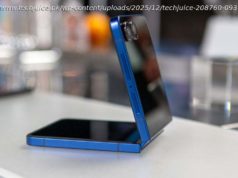 The new Raspberry Pi single-board computer is smaller and cheaper than the last, but its makers aren’t expecting the same rush of buyers that previous models have seen.
The new Raspberry Pi single-board computer is smaller and cheaper than the last, but its makers aren’t expecting the same rush of buyers that previous models have seen.
The Raspberry Pi Compute Module 3 will be more of a “slow burn,” than last year’s Raspberry Pi 3, its creator Eben Upton predicted.
That’s because it’s designed not for school and home use but for industrial applications. To make use of it, buyers will first need to design a product with a slot on the circuit board to accommodate it and that, he said, will take time.
The Compute Module 3 has the same four-core, 64-bit Broadcom BCM2837 processor and 1GB of RAM as the credit-card-sized Raspberry Pi 3, but is less than half the size and missing the Ethernet, USB, SD Card and display sockets of its larger cousin. It also has no Wi-Fi.
The signals for the missing ports all appear on an edge connector that fits into a SODIMM socket, typically used for laptop memory upgrades, allowing industrial product designers to choose which ports they want to expose on their product, and which functions they want to build in or do without.
That means it can be incorporated into all manner of robots, industrial machinery, and other devices.
“We’ve seen some nice designs for it,” Upton said. “Probably the ones we are most excited about are NEC’s large-format displays, which have the option to put a Compute Module inside to add intelligence to what was previously a passive display. “
NEC revealed those smart signage systems in October 2016 , long before the Compute Module 3 went on sale on Jan.






